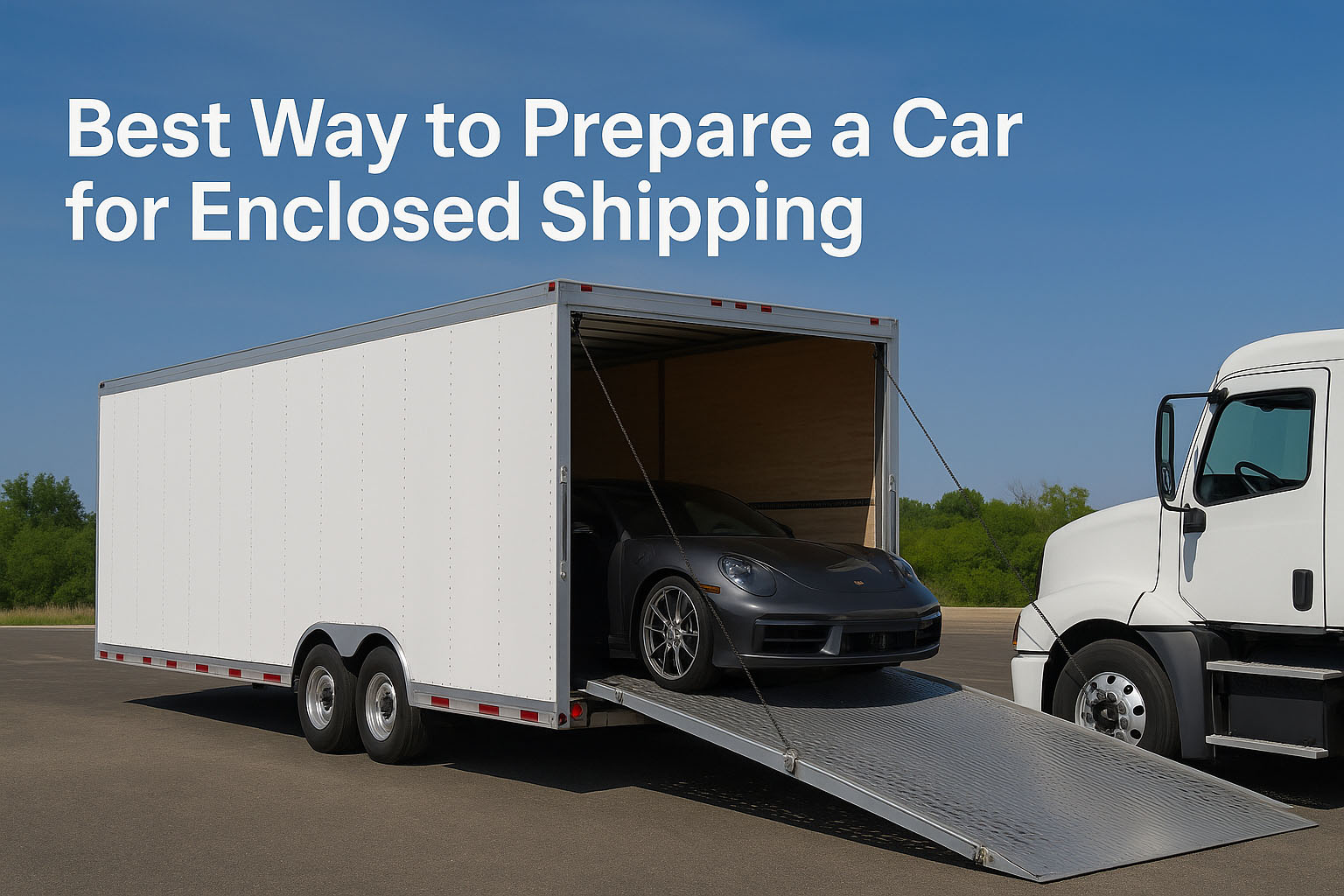




When you book enclosed car transport, you’re investing in the highest level of vehicle protection available. The covered trailer shields your car from weather, road debris, and unwanted access to your vehicle. But to take that protection all the way to the max—and to avoid issues with insurance or inspections—you need to properly prepare your vehicle before it’s loaded.
Here’s a step-by-step checklist from the experts at NX Automotive Transport.
Give your car a full wash inside and out before pickup. A clean surface makes it easy to spot and document any pre-existing scratches, dents, or imperfections.
Pro tip: Carriers and insurance adjusters rely on the Bill of Lading inspection at pickup. A clean car helps you prove its condition.
Take high-resolution photos and video of your vehicle from multiple angles, including:
Save them with a timestamp. This gives you proof if any damage occurs in transit.
Even in enclosed transport, your car isn’t a moving storage unit. Carriers are not liable for personal belongings, and extra weight can affect loading.
Remove:
If you must leave something small (like a child seat), let your transport specialist know in advance.
Your needs to be ready to roll on and off a trailer. Check:
If your vehicle is inoperable, tell the carrier in advance—special equipment may be required, and pricing differs.
Keep your fuel tank at about ¼ full if possible. This reduces weight, lowers fire risk (old classics and race cars, especially) , and is plenty for loading and unloading. More than that is unnecessary and discouraged.
Car alarms that trigger mid-transport can cause major headaches. Disable alarms or provide instructions to the driver.
Remove or disable your toll transponders (EZ-Pass, SunPass, FasTrak) so that way you’re not billed while your vehicle is hauled across toll routes.
Removable items such as spoilers, racks, antennas, or loose custom parts should be secured or removed. This prevents damage during tie-downs and ensures your car fits inside the enclosed trailer properly.
If your car is especially low-clearance, ask about a hydraulic liftgate trailer (safer than ramps) and we'll be glad to oblige.
Have a full set of keys ready: ignition, trunk, wheel lock, alarm fob. The driver must be able to start, move, and secure your car.
Also prepare:
At pickup, the driver will complete a Bill of Lading (BOL)—a condition report of your vehicle. Walk around with the driver, note all imperfections, and keep a signed copy. Do the same at delivery.
This is your legal record for any insurance claims.
If your vehicle has quirks (aftermarket immobilizers, special start sequences, tight ground clearance), tell the carrier ahead of time. The more they know, the safer your vehicle will be.
Preparing your car for enclosed transport isn’t complicated—but it is essential. A clean, well-documented, and ready-to-ship vehicle ensures a smooth pickup, protects your insurance coverage, and keeps the transport process efficient.
At NX Automotive Transport, we guide every client through this process and provide reminders before pickup. Our goal: make sure your vehicle arrives in the exact condition it left, with zero surprises.
👉 Ready to ship your car in an enclosed trailer? Get a free enclosed transport quote today and let NX handle the rest.
There isn't insider pricing or special deals others get that we cannot.
We believe in giving jobs to our community. All sales staff is here in the USA.